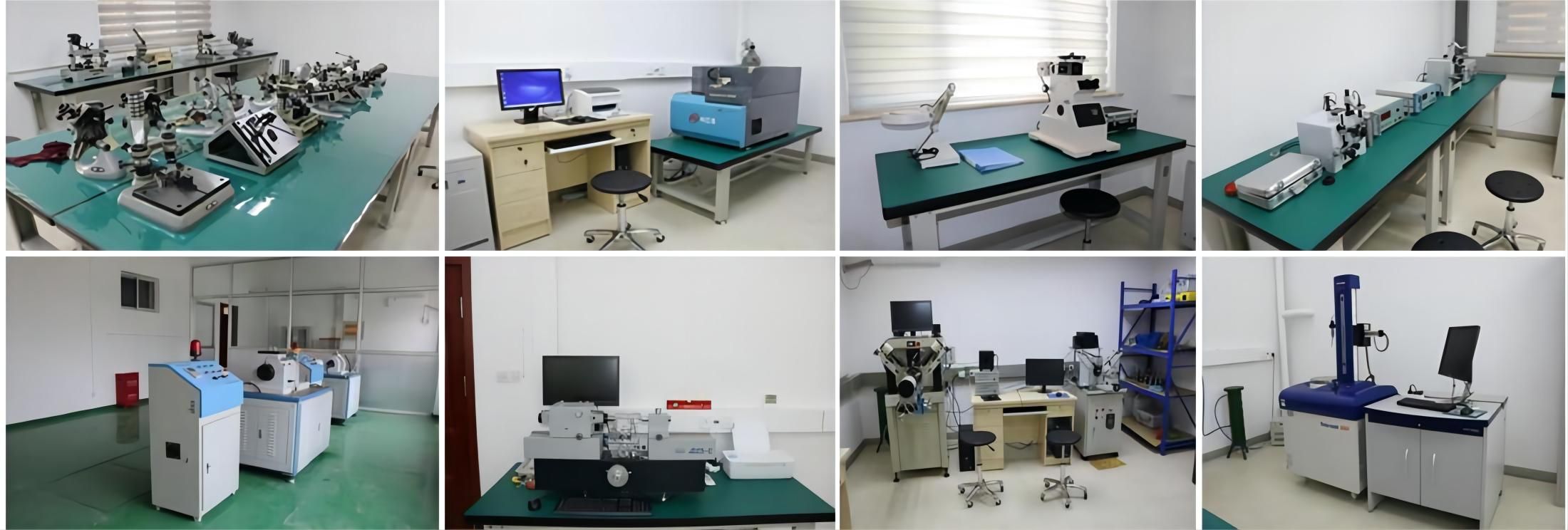The accuracy of precision bearings after installation
Introduce the accuracy of precision bearings after installation
1. Accuracy improvement method
After the bearing is installed in the main engine, if the radial runout of the main shaft is measured, it can be found that the measured value of each revolution has a certain change; when the measurement is carried out continuously, it can be found that after a certain number of revolutions, the change will be approximately repeated Appear. The index to measure the degree of this change is the cyclic rotation accuracy. The number of revolutions required for the approximate repetition of the change represents the “quasi-period” of the cyclic rotation accuracy. The magnitude of the change in the quasi-period is large, that is, the cyclic rotation accuracy is poor. .
If proper preload is applied to the main shaft, the speed is gradually increased to close to the working speed to implement the “run-in” effect of the bearing, which can improve the cyclic rotation accuracy of the main shaft.
2. A method to improve bearing accuracy
A factory trial-manufactured a precision instrument. The main shaft used 6202/P2 bearings, but its accuracy still could not meet the requirements. Later, the journal was thickened and a raceway was made on it to replace the inner ring. Each group of three balls is separated by an interval of nearly 120°. Due to the reduction of a heavy processing surface and a heavy matching surface, it also improves the rigidity of the shaft-bearing system, while the largest three grains and the smallest three The nearly equidistant distribution of steel balls improves the rotation accuracy of the shaft, thus meeting the accuracy requirements of the instrument.
3. Comprehensive verification method of installation accuracy
After installing the angular contact ball bearing into the main shaft, the installation accuracy verification sequence is as follows (taking a common lathe with a shaft diameter of 60-100mm as an example):
(1) Measure the size of the shaft and the bearing seat hole to determine the matching accuracy of the bearing. The matching requirements are as follows: the inner ring and the shaft adopt an interference fit, and the interference fit is 0~+4μm (0 at light load and high precision) ;The outer ring and the housing hole adopt a clearance fit, and the clearance is 0~+6μm (but the clearance can be increased when the bearing at the free end uses an angular contact ball bearing); the roundness error of the shaft and the housing hole surface is below 2μm, and the bearing The parallelism of the end face of the used spacer is less than 2 μm, the runout of the inner end of the shaft shoulder to the outer end face is less than 2 μm; the runout of the shoulder of the bearing housing hole to the axis is less than 4 μm; the runout of the inner end of the main shaft front cover to the axis is less than 4 μm.
(2) Installation of the front bearing of the fixed end on the shaft
Clean the bearing thoroughly with clean cleaning kerosene. For grease lubrication, first inject an organic solvent containing 3% to 5% grease into the bearing for degreasing and cleaning, and then use a grease gun to fill a certain amount of grease into the bearing (accounting for 10% to 15% of the bearing space volume); heat the bearing to raise the temperature by 20 to 30°C, and install the bearing into the shaft end with a hydraulic press; press the adapter sleeve on the shaft and press against the bearing end face with a suitable pressure to make it axially Positioning; wind the belt of the spring balance on the outer ring of the bearing, and use the method of measuring the starting torque to verify whether the specified preload has a large change (even if the bearing is correct, but due to the deformation of the fit or the cage, the preload will also change. likely to change).
(3) Install the bearing-shaft assembly into the seat hole
Heat the seat hole to increase the temperature by 20-30°C, and install the bearing-shaft assembly into the seat hole with continuous and gentle pressure; adjust the front cover so that the fastening amount of the front cover is 0.02-0.05 μm, taking the outer end surface of the bearing seat as Benchmark, put the head of the dial gauge against the surface of the journal, rotate the shaft to measure its runout, and the error is required to be less than 10 μm; position the dial gauge on the shaft, make the head of the dial touch the inner surface of the rear seat hole, and rotate the shaft To measure the coaxiality of the front and rear housing holes of the bearing seat.
(4) Selectively place the free end bearing at a position that may offset the deviation, and install it at the rear support position of the bearing housing to offset the mutual roundness deviation and coaxiality deviation as much as possible.
Installation of double-row short cylindrical roller bearings with tapered bore When installing NN3000K series double-row short cylindrical roller bearings with tapered bore, attention must be paid to the correct matching of the inner diameter of the bearing and the taper of the shaft, and the coloring method can be used in the case of small production volume. Contact calibration, but when the production batch is large, it is best to use a precise taper gauge for calibration.
When installing the bearing on the tapered shaft, the inner ring should be adjusted to an appropriate position in the axial direction so that the radial clearance is close to zero.
Any bearings news please click our HOME page.
